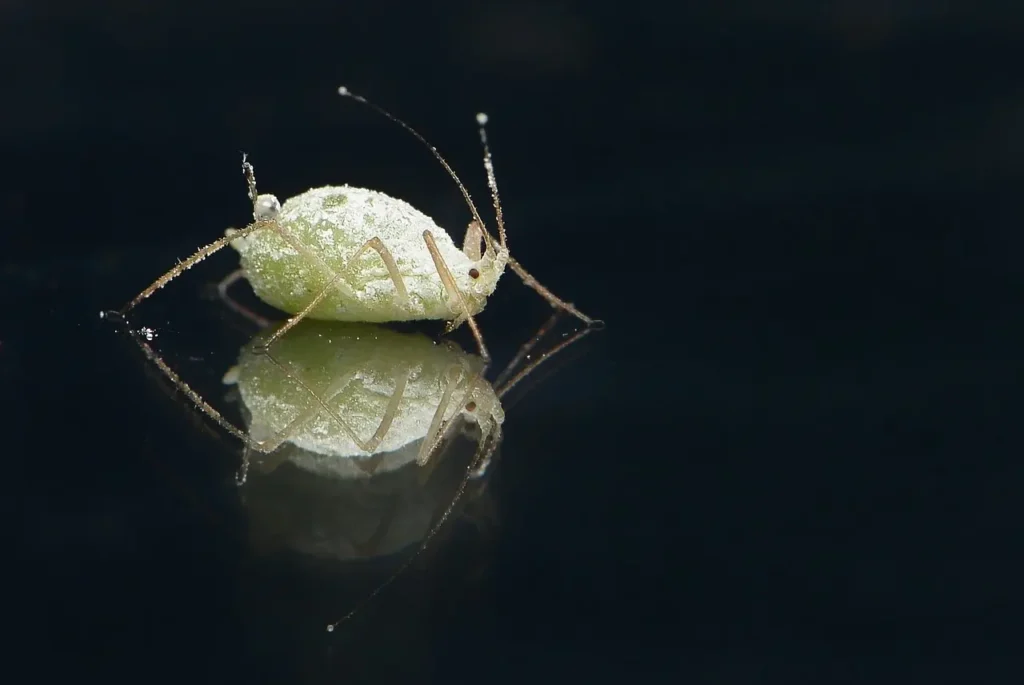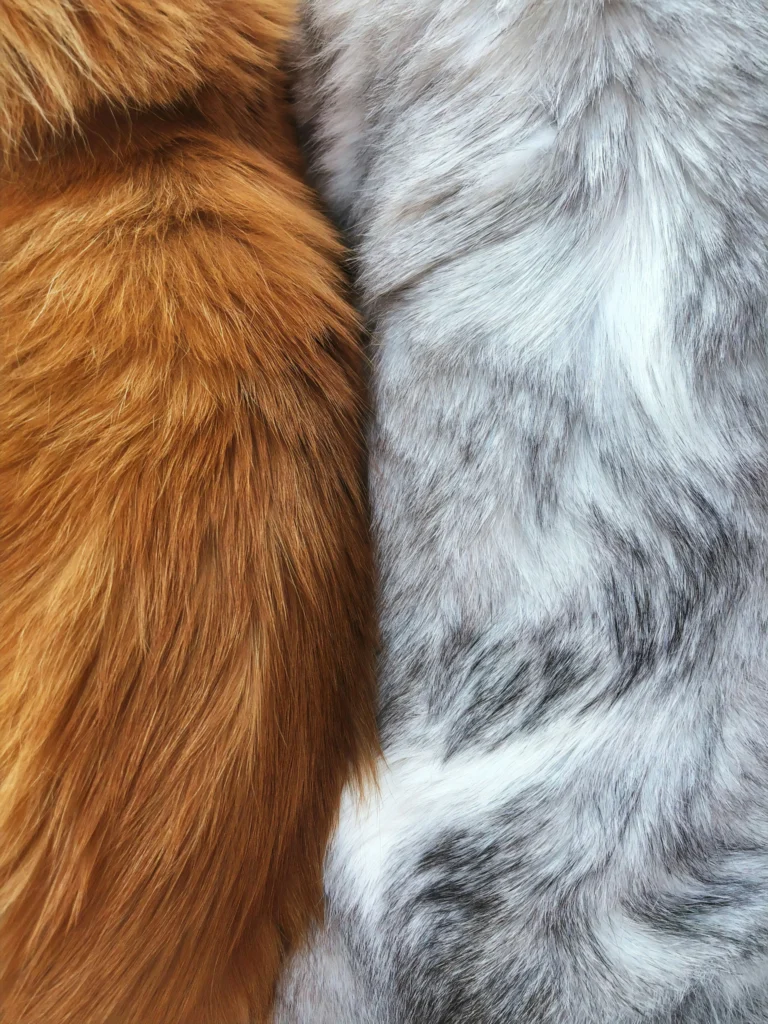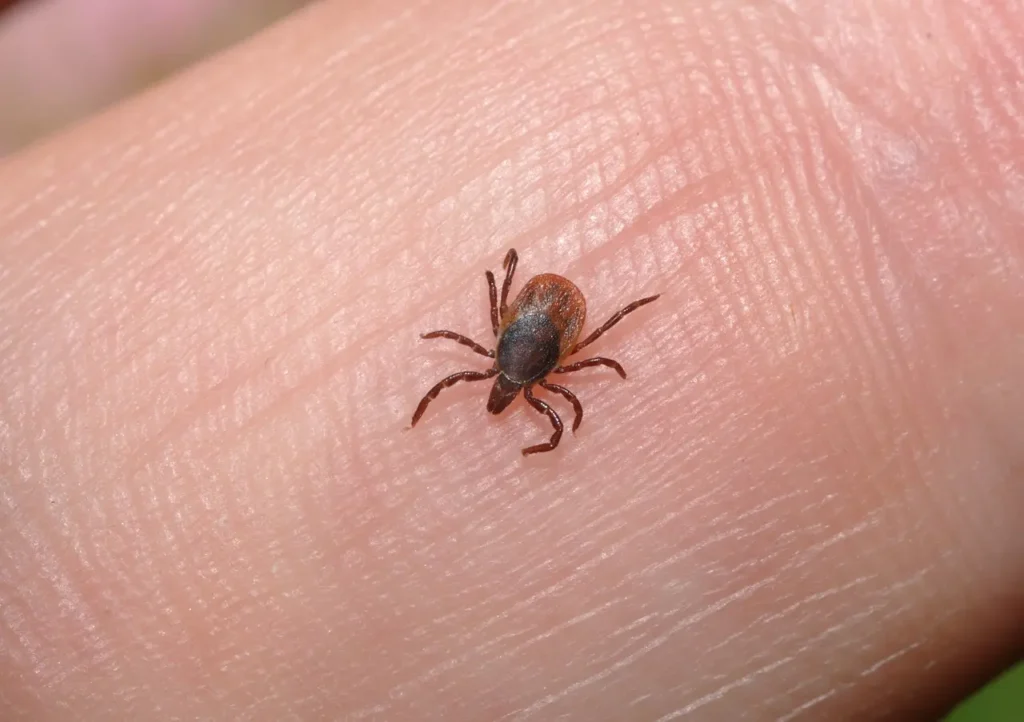Can Dogs Get Lice ? Learn the Facts & How to Treat
As a dog owner, you might be wondering if your furry friend is susceptible to lice infestations. Lice are tiny, parasitic insects that can cause discomfort and health issues in both humans and animals. While Dog lice, a particular kind of lice that infest canine fur, are frequently confused with human hair.
Understanding whether dogs can get lice is crucial for providing the right care and treatment. If left untreated, dog lice infestations can cause itching, skin irritation, and even illnesses. In this article, we’ll explore the facts about dog lice, how to identify them, and the best methods for treatment.
Key Takeaways
- Dogs can indeed get lice, which are specific to canines.
- Itching, pain, and even infections are all consequences of lice infestations.
- Understanding the facts about dog lice is essential for proper care.
- Identifying lice in dogs requires a close examination of their coat.
- Effective treatment options are available to eliminate lice infestations.
Table of Contents
Table of Contents
Understanding Dog Lice: The Basics
The issue of dog lice is often misunderstood, leading to delayed treatment and prolonged suffering for affected dogs. Dog lice are ectoparasites that reside on dogs’ skin and coats and feed on blood, dirt, and other materials.
What Are Dog Lice?
Dog lice are tiny, wingless insects that are highly specific to their canine hosts. They are not capable of flying or jumping and are usually spread through direct contact between dogs.
Types of Lice That Affect Dogs
Chewing and sucking lice are the two primary forms of lice that infest dogs.
Trichodectes canis (Chewing Lice)
Trichodectes canis, commonly known as chewing lice, feed on skin debris and other materials. They can be quite uncomfortable and itchy, and they are more common among puppies.
Linognathus setosus (Sucking Lice)
Linognathus setosus, or sucking lice, feed on the blood of dogs. Their bites can cause anemia, especially in young or weak dogs, and lead to significant health issues.
| Type of Lice | Feeding Behavior | Health Impact |
| Trichodectes canis (Chewing Lice) | Feeds on skin debris | Causes itching and discomfort |
| Linognathus setosus (Sucking Lice) | Feeds on dog’s blood | Can cause anemia, especially in puppies |

How Common Is Lice in Dogs?
Lice infestations are relatively common in dogs, especially in environments where dogs are in close contact with each other, such as dog parks, kennels, and shelters. Regular grooming and inspections are key to detecting lice early and preventing severe infestations.
Can Dogs Get Lice? The Simple Answer
Although human infestations of lice are annoying, can dogs also develop lice? The answer lies in understanding the nature of lice and their host specificity.
Species-Specific Nature of Lice
Lice are ectoparasites that are highly specific to their hosts. This means that lice affecting dogs are different from those that affect humans. The species-specific nature of lice is a crucial factor in determining whether dogs can get lice from humans or vice versa.
Differences Between Human and Dog Lice
Human lice (Pediculus humanus) are adapted to living on human blood, while dog lice (Trichodectes canis and Linognathus setosus) are adapted to canine blood. This distinction is vital in understanding that dogs cannot get human lice, and humans cannot get dog lice.
| Lice Type | Host | Characteristics |
| Human Lice | Humans | Feed on human blood, causing itching and discomfort |
| Dog Lice | Dogs | Feed on canine blood, causing itching, hair loss, and skin irritation |
Misconceptions About Dog Lice
There is a widespread misperception that humans may transmit lice to dogs. However, as mentioned earlier, lice are species-specific. Another misconception is that lice infestations are a sign of poor hygiene or poor health in dogs. In reality, any dog can get lice, regardless of its health or grooming.
“Lice are a common problem in dogs, and understanding their species-specific nature is key to addressing the issue.” – Dr. Jane Smith, Veterinarian
Signs and Symptoms of Lice in Dogs
The presence of lice in dogs is often accompanied by distinct physical and behavioral changes that warrant attention. Early detection of these symptoms is essential for successful therapy.
Physical Symptoms to Watch For
Dogs infested with lice may display several physical symptoms. These can include:
- Intensive scratching and chewing at their skin due to discomfort caused by lice bites.
- Skin discomfort and hair loss could result in subsequent infections.
- Lice eggs (nits) attached to the dog’s hair shafts, especially around the ears, neck, and tail.
- Actual sighting of lice in the dog’s coat, particularly in areas where the fur is thinner.
It’s essential to monitor your dog closely for these signs, as they can indicate a lice infestation.
Behavioral Changes in Dogs with Lice
Dogs with lice may also exhibit behavioral changes, such as:
- Increased restlessness and irritability due to the discomfort.
- Changes in appetite or sleep patterns.
- Avoiding certain areas or activities due to the infestation.
These changes can be subtle, so it’s crucial to be observant.
How to Check Your Dog for Lice
Checking your dog for lice requires patience and a systematic approach. Here are the steps:
Visual Inspection Techniques
Begin with a thorough visual inspection of your dog’s coat, paying particular attention to areas where lice are commonly found.
Using a Fine-Toothed Comb
A fine-toothed comb is an effective tool for detecting lice and nits. Comb through your dog’s fur section by section, inspecting the comb for signs of lice after each pass.

| Inspection Method | Key Areas to Focus On | Tools Needed |
| Visual Inspection | Ears, neck, tail, and areas with thinner fur | Good lighting, magnifying glass (optional) |
| Fine-Toothed Comb | Entire coat, section by section | Fine-toothed comb, white paper or cloth to inspect comb |
By following these steps and being vigilant, you can identify lice infestations early and seek appropriate treatment.
How Dogs Get Lice: Transmission and Risk Factors
To properly prevent and cure infestations, dog owners must understand how lice infect their pets. Dog lice are external parasites that feed on the skin debris and blood of dogs, causing discomfort and potentially leading to secondary infections.
Common Ways Dogs Contract Lice
Dogs can contract lice through direct contact with an infested dog or through contact with contaminated objects such as bedding, grooming tools, or even the environment where an infested dog has been.
- Direct dog-to-dog contact
- Contact with contaminated environments or objects
High-Risk Environments and Situations
Certain environments and situations increase the risk of dog lice transmission. These include:
- Dog daycare centers and kennels where dogs are in close proximity
- Dog parks and areas where dogs frequently visit
- Poorly maintained or unsanitary living conditions for dogs
Dogs Most Susceptible to Lice Infestations
Some dogs are more susceptible to lice infestations due to various factors.
Age Factors
Puppies and younger dogs are more likely to get lice due to their developing immune systems.
Health and Immune System Considerations
Dogs with compromised health or weakened immune systems are more vulnerable to lice infestations. Factors that can weaken a dog’s immune system include malnutrition, chronic diseases, or stress.
Can Dogs Get Lice From Humans?
The possibility of dogs getting lice from humans is a concern for many pet owners. Lice infestations are a nuisance, and understanding the dynamics of cross-species transmission is crucial for effective pet care.
Cross-Species Transmission Facts
Lice are ectoparasites that feed on the blood, skin debris, or other materials from their host’s body. The concept of cross-species transmission refers to the ability of lice to infest different species. However, lice are generally species-specific, meaning that lice adapted to humans are different from those adapted to dogs.
“Lice are highly adapted to their specific hosts, and transmission between different species is rare,” according to parasitology experts. This specificity is due to the unique adaptations of lice to their host’s environment, such as the structure of their mouthparts and the composition of their saliva.
Scientific Evidence on Human-to-Dog Lice Transfer
Scientific studies have shown that human lice (Pediculus humanus) and dog lice (Trichodectes canis or Linognathus setosus) are distinct species with different biological characteristics. Research indicates that human lice cannot survive for long on dogs, nor can they feed on canine blood effectively.
Can Dogs Get Head Lice?
Dogs cannot be infested by head lice, a particular kind of human lice that has evolved to live on the human scalp. Dogs have their own species of lice, which are not transmissible from humans. Therefore, dogs cannot get head lice from humans.
In conclusion, while dogs and humans can be in close proximity, the risk of dogs getting lice from humans is negligible due to the species-specific nature of lice. Pet owners should focus on other aspects of dog care and lice prevention.
Can Dogs Get Lice From Other Animals?
Understanding how lice are transmitted between dogs and other animals is crucial for preventing infestations. Dogs can potentially contract lice from other animals, but the likelihood and circumstances under which this happens vary.
Can Dogs Get Lice From Cats?
Dogs and cats can share a household, and their interaction can sometimes lead to the transmission of parasites. However, lice are species-specific, meaning that dogs are generally not infested by cat lice and vice versa. While it’s theoretically possible for dogs to get lice from cats, the risk is relatively low due to this species-specific nature.
Transmission Between Dogs and Other Pets
It is more likely for dogs to spread lice to other household pets if those pets are also dogs or have lice of the same species. For instance, direct contact with an infested dog can lead to the transfer of lice. Factors such as the closeness of the animals, the presence of lice on the fur, and the overall health of the pets play a significant role in transmission.
- Direct contact with infested animals
- Sharing of grooming tools or bedding
- Close living quarters
Wildlife and Lice Transmission to Dogs
While less common, dogs can potentially get lice from wildlife if they come into contact with infested animals. For example, if a dog encounters an infested raccoon or another wild animal, there’s a possibility of lice transmission. However, this is not a primary mode of transmission for dog lice.
By understanding these dynamics, pet owners can take necessary precautions to minimize the risk of lice infestations in their dogs.

Can Humans Get Lice From Dogs?
It’s natural to be concerned about the risk of getting lice from your dog if it’s infested. Fortunately, dog lice are typically species-specific, which means they are suited to survive on dogs rather than people.
Dog Lice and Human Health
Dog lice do not typically pose a significant risk to human health. While it’s theoretically possible for dog lice to temporarily be on a human, they cannot complete their life cycle on human hosts or feed on human blood. This makes the transmission of dog lice to humans extremely rare.
Precautions When Handling Dogs With Lice
Although the risk is low, it’s still important to take precautions when handling dogs with lice. Washing your hands thoroughly after petting or grooming an infested dog can help minimize any potential risk. Additionally, avoiding close contact with an infested dog’s bedding or areas where it has been can also reduce the chance of getting lice.
Myths vs. Facts About Zoonotic Transmission
There’s a common misconception that dogs can easily transmit lice to humans. However, scientific evidence suggests that zoonotic transmission (the transfer of disease or parasites from animals to humans) of dog lice is highly unlikely. To put this into perspective, let’s look at some key facts:
| Myth/Fact | Description |
| Myth: Dogs can easily transmit lice to humans. | Fact: Dog lice are species-specific and cannot complete their life cycle on humans. |
| Myth: Dog lice can feed on human blood. | Fact: Dog lice are adapted to feed on dog blood, not human blood. |
| Myth: Close contact with an infested dog always results in lice transmission to humans. | Fact: Transmission of dog lice to humans is extremely rare and usually requires prolonged close contact. |
By understanding the facts about dog lice and human health, you can better protect yourself and your pets from potential risks.
Diagnosing Lice in Dogs
Lice infestations in dogs can be diagnosed through a combination of at-home inspections and professional veterinary examinations. For early discovery and successful treatment, it is essential to recognize the symptoms.
At-Home Inspection Techniques
Dog owners can perform initial checks at home by thoroughly examining their dog’s coat, particularly around the ears, neck, and tail areas, for signs of lice or their eggs (nits).
When to See a Veterinarian
If you suspect that your dog has lice, it’s essential to consult a veterinarian for a definitive diagnosis and to rule out other skin conditions that may mimic lice infestations.
Professional Diagnosis Methods
Veterinarians employ several methods to diagnose lice in dogs, including:
- Visual examination of the dog’s coat and skin
- Microscopic examination of skin scrapings or hair samples
Microscopic Examination
This involves examining samples under a microscope to identify lice or their eggs, providing a definitive diagnosis.
Differentiating Lice From Other Parasites
Veterinarians must differentiate lice from other parasites, such as fleas or mites, to ensure appropriate treatment.
| Diagnosis Method | Description |
| Visual Examination | looking for evidence of lice or nits on the dog’s skin and coat |
| Microscopic Examination | Using a microscope to examine hair samples or skin scrapings |
Treating Dog Lice: Effective Methods
Dog lice treatment involves a multi-faceted approach, including veterinary care and home remedies. Effective management of dog lice requires understanding the various treatment options available.
Veterinary Treatments and Medications
Veterinary treatments are often the first line of defense against dog lice. Generally speaking, these medicines work better than over-the-counter remedies.
Prescription Insecticides
Prescription insecticides are commonly used to treat dog lice. These medications are usually applied topically and can provide quick relief.
Oral Medications
To treat dog lice, doctors may occasionally prescribe oral medicines. These work systemically to kill lice and are often used in severe infestations.
Over-the-Counter Solutions
For less severe cases, over-the-counter (OTC) solutions can be effective. These include medicated shampoos and sprays.
Natural and Home Remedies
Some pet owners prefer natural remedies for treating dog lice. These can include:
Essential Oil Treatments
Certain essential oils, such as tea tree oil, have been shown to have lice-killing properties.
Diatomaceous Earth Applications
Diatomaceous earth is a natural powder that can be used to dehydrate and kill lice.
Herbal Baths and Rinses
Herbal baths and rinses can provide additional relief and help soothe the dog’s skin.
Treatment Timeline and Recovery
The treatment timeline can vary depending on the severity of the infestation and the treatment method used. Generally, it may take several weeks to fully eliminate lice.
Treating Your Home Environment
In order to stop re-infestation, the home environment must be treated. This includes washing the dog’s bedding, vacuuming carpets, and treating other pets in the household.
By combining veterinary treatments with environmental management, dog owners can effectively eliminate dog lice and prevent future infestations.
Preventing Lice Infestations in Dogs
Preventing lice infestations in dogs requires a multi-faceted approach that includes regular grooming, environmental management, and preventative products. By adopting a comprehensive prevention strategy, dog owners can significantly reduce the risk of lice infestations and keep their pets healthy and comfortable.
Regular Grooming Practices
Regular grooming is essential for preventing lice infestations in dogs. This includes:
- Brushing your dog’s coat regularly to remove dirt and debris
- Inspecting your dog’s coat for signs of lice or eggs
- Bathing your dog regularly with a medicated shampoo
Regular grooming not only helps to prevent lice infestations but also promotes overall health and well-being.
Environmental Management
Lice can survive off a dog’s body for several days, making environmental management crucial for preventing infestations. This includes:
- In order to stop re-infestation, the home environment must be treated.
- Drying your dog’s bedding on high heat
- Vacuuming your home regularly, especially areas where your dog spends time
Preventative Products and Treatments
There are various preventative products and treatments available that can help to prevent lice infestations in dogs. These include:
| Product/Treatment | Description | Benefits |
| Medicated shampoos | Shampoos containing ingredients that repel or kill lice | Effective against lice, easy to use |
| Topical treatments | Products for preventing lice that are directly applied to the dog’s coat | Convenient, easy to apply |
| Lice combs | Specialized combs designed to remove lice and eggs from a dog’s coat | Effective, non-toxic |
Monitoring Dogs After Exposure
After exposure to lice, it’s essential to monitor your dog closely for signs of infestation. This includes:
- Inspecting your dog’s coat regularly for signs of lice or eggs
- Checking for behavioral changes, such as excessive scratching or restlessness
- Consulting with a veterinarian if you suspect lice infestation
By being proactive and vigilant, dog owners can help to prevent lice infestations and keep their pets healthy.

FAQs
Can a dog get lice from humans?
No, dogs cannot get lice from humans. Lice are species-specific, meaning human lice thrive only on humans, and dog lice thrive only on dogs. They cannot transfer between the two species.
Can dog lice get into your hair?
No, dog lice cannot get into your hair and infest you. Similar to the above, dog lice are adapted to dog fur and cannot survive or reproduce on human hair.
How do you treat lice on dogs?
Treating lice on dogs typically involves insecticidal shampoos, topical treatments, or oral medications recommended by a veterinarian. Regular bathing with an appropriate shampoo can kill adult lice, but repeated treatments are usually necessary to eliminate newly hatched nits. Disinfecting bedding and grooming tools is also crucial.
What do lice look like on dogs’ skin?
On dogs, lice appear as small, pale, or tan insects clinging to the fur and skin. They are tiny but usually visible to the naked eye. They don’t jump like fleas; instead, they crawl. You might also see their eggs (nits) firmly attached to hair shafts.
Can lice live on pillows?
Lice (both human and dog) generally cannot live long on pillows or other surfaces away from a host. They need the warmth and blood from their specific host to survive. Human head lice will die within 1-2 days off a person’s head, and dog lice also die quickly without their canine host.
How long do lice live?
Adult lice typically live for about 30 days on their host. Off the host, they generally die within 1-2 days as they cannot feed. Lice eggs (nits) can survive longer, but usually won’t hatch if they’re not kept at the host’s body temperature.
How far can lice jump?
Lice cannot jump or fly. They move by crawling. This is why direct contact is the primary way lice spread from one host to another.
Are lice harmful to humans?
Human head lice are generally not dangerous and do not spread disease. However, they can cause intense itching, discomfort, and potentially lead to skin irritation or secondary infections from scratching. Dog lice are not harmful to humans.
What do lice eggs look like?
Lice eggs, called nits, look like tiny, oval-shaped specks, often pale, yellow, tan, or brown. They are firmly glued to individual hair shafts, close to the skin, and won’t easily flake off like dandruff.
Conclusion: Keeping Your Dog Lice-Free
Understanding the facts about dog lice is crucial for maintaining your pet’s health. As discussed, dog lice are species-specific, and transmission typically occurs through direct contact with an infested dog. Regular grooming, inspecting your dog’s coat, and keeping their environment clean are essential steps in preventing lice infestations.
To keep your dog lice-free, it’s vital to monitor their health closely, especially after exposure to other dogs. Using preventative products and treatments can also help. If you suspect your dog has lice, consult a veterinarian for proper diagnosis and treatment. By staying informed and vigilant, you can help ensure your dog remains healthy and lice-free.

